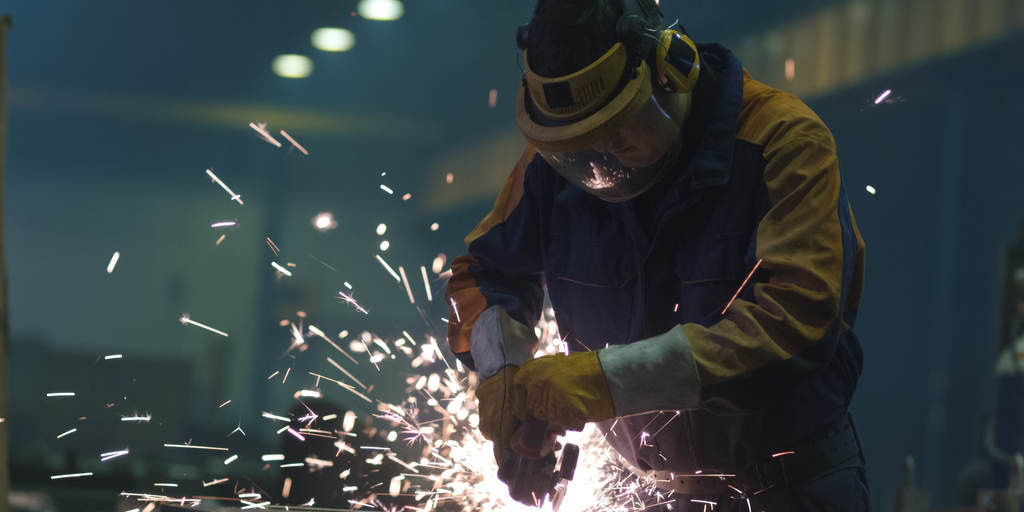
The Case for Cooling People via Air Movement in Hot and Humid and Hot and Dry Environments.
Introduction
Many buildings suffer from overheating in summer. This can result in a whole range of negative impacts on the building user (heat stroke, poor performance, lost revenue etc.) and the building itself (Condensation, mould growth, slip hazards etc.)
Currently, the most popular solution is air conditioning. Unfortunately, air conditioning is very expensive to install and run. And you still have a significant proportion of people in air conditioned buildings expressing discomfort.
Air movement can provide a very cost effective alternative solution to the problem of overheating and/ or condensation in your building.
The Problems with Overheating
Overheating in your building can cause significant issues around: –
- Sports or work safety
- Sporting or teaching outcomes
- Poor productivity
- Heat stroke and other health issues
- Reduced demand for facilities resulting in reduced revenue
- Increased risk for the building owner
- A large range of indirect or hidden costs
History
Cooling via air movement is the original form of thermal comfort improvement and has been used in all types of climates, from Arid to Tropical.
Since Egyptian times, man has been recorded using air movement to provide cooling. In many countries located in warm or tropical climates, the use of air movement is still a common and cost effective way of improving thermal comfort in even the warmest environments.
Thermal Comfort
The key to any building design and operations is thermal comfort. Unfortunately, though, and strange as it may seem, it’s a very neglected component of building design.
However, a large amount of research has been undertaken in recent years around thermal comfort- what is it, how do we apply it, do different people like different levels of comfort or what types of comfort are preferred etc?
Empirical research indicates that in any type of building, no matter how it is cooled or heated, you will always get someone who is uncomfortable.
‘I’m too hot, I’m too cold, …. my feet are cold, my heads too hot or too cold’ … its draughty…the list of complaints is never ending.
The message here is that thermal comfort is a subjective and very personal concept. What is comfortable for you may not be comfortable for the person next to you. This applies significantly in air conditioning research and application.
An air conditioning engineer will be very pleased if his air-conditioned building design achieves a level of 15% PPD (Percentage of People Dissatisfied). That is a common design criteria when a consultant is providing an air conditioning design.
15% of people uncomfortable! That’s a good outcome in air conditioned space. Even with air conditioning you won’t have everyone comfortable.
Often, it’s more like 20% PPD in air conditioned buildings.
That’s one in five (1 in 5) people complaining they aren’t comfortable in air conditioned buildings.!
Funnily enough, empirical research also indicates that in a naturally ventilated building, where cooling air movement is promoted, the same percentage (15%) of building inhabitants will be dissatisfied. (De Dear, Nicol, Brager et al)
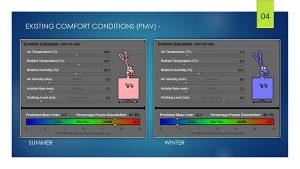

So, in essence, if you air-condition a space, you will spend a lot of money on achieving the same outcome as if you hadn’t air conditioned the space, just by utilising air flow and air movement instead.
Now, if you are wedded to a fixed temperature in your building, then you will need to use air conditioning. Remembering though, the standard design and costing criteria for that air conditioning system is designed to work effectively or efficiently in outside dry bulb air temperatures, which in Australia is often between 32-35 Deg C….. (Subject to AIRAH climatic design requirements for air -conditioning) and will be expensive to buy and maintain…. and still, not everyone will be comfortable! Once the outside temperature goes over that design temperature the air conditioning system will start to struggle.
How Cooling Via Air Movement Works
When the body starts to overheat, it loses its capacity to remove that heat. As the body temperature increases, especially above 35 Deg C, the primary method of cooling is perspiration. Over 30% of the heat in the body is lost via perspiration. That perspiration contains what’s known as latent heat.
The trick is to remove that perspiration (latent heat) fast as that perspiration contains the heat. Air movement across the skin will remove that perspiration (sweat) heat very fast and offer a rapid drop in temperature. The more you perspire, the faster you remove the perspiration, the faster your cooling perception. For example, standing in front of a fan when you are really hot will cool you down very quickly.
This is known as evaporative cooling.
And its effective in both hot and humid and hot and dry (arid) climates, although to slightly different levels and with slightly different acceptance and clarifying parameters.
Scientifically Proven Benefits of Air Movement for Cooling
At the end of this document you will see some of the myriad research undertaken around air movement and improvements in thermal cooling comfort.
Professor Richard Aynsley, highly regarded specialist on thermal comfort and air movement, indicates that 3m/s of air speed across the body, on a day that is 35 Deg C. with a humidity level of 70%, will make the body feel like its 29.3 Deg C. (SET) This is a great outcome using cost effective low carbon and low energy air movement.
Market Alternatives – types of solutions available
If you want to cool your building inhabitants, you have a limited range of options: –
- Air Conditioning -very expensive to install and run
- Large bladed ceiling fans or HVLS Fans -limited efficacy especially at higher (>6 metres) install locations and many constraints/costs around strobing, user disquiet, power, installation and maintenance programmes.
- Pedestal fans – ineffective, noisy and costly to run
- Roof extraction -noisy and limited effectiveness and still not providing evaporative cooling
- Airius Air Pears Air Circulation Turbines
What is an Air Pear?
An Air Pear® is a patented air turbine. Fully engineered and manufactured in house in the USA, it is designed to move air over long distance in a narrow, focused column, using very low amounts of energy. When installed into a space, the units all work together, entraining the nearby air and moving the air around the space. Using a speed controller, the air movement can be vigorous or gentle. The air flow is semi directional, enabling accurate location of the air flow if required.
Where can I use them?
The Air Pear can be used in any type of building from 2.5 to 40 metres high. Sports halls, basketball courts, warehouses, indoor pools, supermarkets, school classrooms and COLA’s, museums, offices, homes, railway stations, temperature controlled storage, car showrooms, atriums, theatres, pharmaceutical, manufacturing… the list of applications is endless.
What are its benefits?
- Significantly Improved thermal comfort summer and winter
- Significantly reduced heating energy in winter (20-50%)
- 5-35% cooling energy savings in air conditioned spaces in summer
- Reduced condensation and mould growth
- No more hot or cold spots in air conditioned spaces.
- Simple to install and very cheap to run.
- Ability to push through the thermal layers in a building, ensuring air movement is achieved at the floor, which no other fan type can achieve unless they use large amounts of energy.
Research
Thermal comfort is the condition of mind that expresses satisfaction with the thermal environment and is assessed by subjective evaluation.
Recent studies have shown that there is often a strong demand for higher air velocities in warm and hot conditions (Yang et al., 2009; Cândido et al., 2011; Huang et al., 2013)
‘Higher velocity air causes more effective cooling, because it pulls heated air away faster, and because it helps perspiration be more effective by evaporating it faster. Even a moderate wind speed can cool perceived temperatures 5°C (9°F) compared to still air. This is how fans make people feel cooler even though they do not change the temperature of the air.’ (Autodesk 2017)
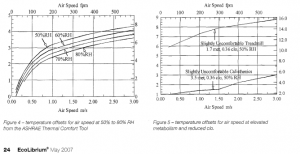
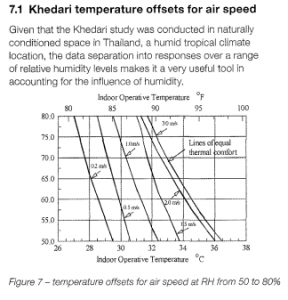
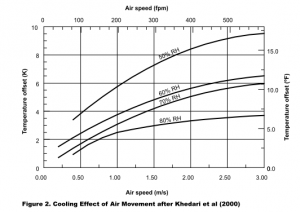
This graph above highlights the value of air movement providing thermal comfort at high temperature and humidity levels, as found in tropical climates.
Conclusion
Air movement is a proven and effective process to cool the inhabitants of your building in all sorts of climates. It is highly efficient, being low in energy use and carbon emissions.
Airius® Air Pears offer a unique, proven methodology to circulate air around your space, with their simple, easy to install products. No blades, no grief.
If you want to talk to a specialist on air movement and thermal comfort, or find out how many other customers or building owners are using this unique product, contact Airius to find out more on this exciting and cost effective solution.
+61 (0) 401 848888
John Brodie
MSC (Sustainable Design Science) USyd.
Further Research Data
Significance of air movement for thermal comfort in warm climates:
A discussion in the Indian context
Madhavi Indraganti 1,*, Ryozo Ooka1, Hom B Rijal2
1 Institute of Industrial Science, The University of Tokyo, Japan
2 Tokyo City University, Japan
Conclusions;
This paper discusses in detail the relevance of increased air movement at elevated indoor temperatures and humidity, usually encountered in warm climates in the tropical subcontinent. A thermal comfort field study in residential buildings conducted by the authors in India revealed the following:
(1) Higher comfort temperatures are successfully obtained through the use of fans,
(2) The subjects are comfortable at much higher indoor temperatures than those specified in the standards (NBC, 2005),
(3) They achieved higher indoor air velocities in the months when the humidity was very high, through the use of many adaptive controls (fans, air-coolers, windows and balcony doors and
(4) The residents displayed a proclivity for higher air movement indoors.
(5) The air movement preference varied with temperature, while humidity had a little effect on the air movement preference.
Final Report
‘Air Movement as An Energy Efficient Means Toward Occupant Comfort’
Edward Arens (PI) Hui Zhang, Wilmer Pasut, Yongchao Zhai, Tyler Hoyt, Li Huang Center for the Built Environment 390 Wurster Hall University of California, Berkeley Berkeley, CA 94720
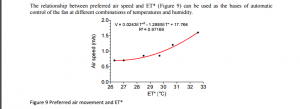
COOLING EFFECT OF AIR SPEED ON HUMANS -Professor Richard Aynsley.
Air movement can have a significant influence on human thermal comfort. Wind chill in cold conditions is detrimental but air movement in neutral to warm environments is considered beneficial. When air temperatures are above about 23ºC the body normally needs to lose heat in order to maintain a constant internal temperature.
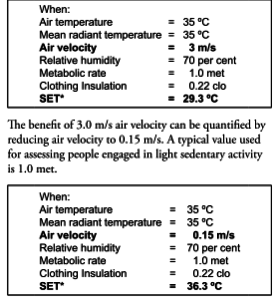
The cooling effect of increasing a uniform air speed from 0.15 m/s to 3.0 m/s can be seen to be 7.0º C, the difference between SET* 36.3 and SET* 29.3. This cooling effect can be used to either evaluate the benefit of air speed through natural ventilated spaces, or to offset summer air conditioning cooling loads to save energy in air-conditioned space. For example, if an air velocity of 3 m/s is achieved by natural ventilation through a house when the air temperature is 35°C with a RH (Relative Humidity) of 70 per cent, then sedentary occupants in light clothing would experience a cooling effect equivalent to lowering the air temperature by 7ºC.
In Closing, cooling occupants by increasing local airflow is ten times more energy efficient than refrigerating the air in a space.

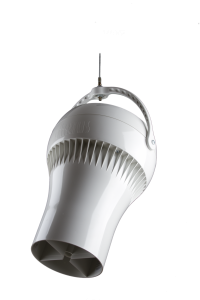




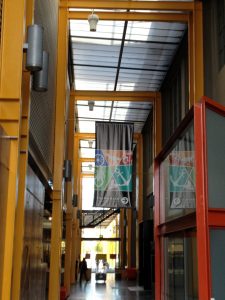



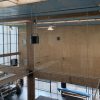

Hi…
I am wondering
How much is your airius cooling fans?
Do you distributor in Jakarta, Indonesia?
Thank you
Frans
Hi Frans,
Thanks for your enquiry. We have offices that cover all around the globe and can certainly help.
We’ll contact you by email to discuss your application in more details.
Regards, the Airius Team.